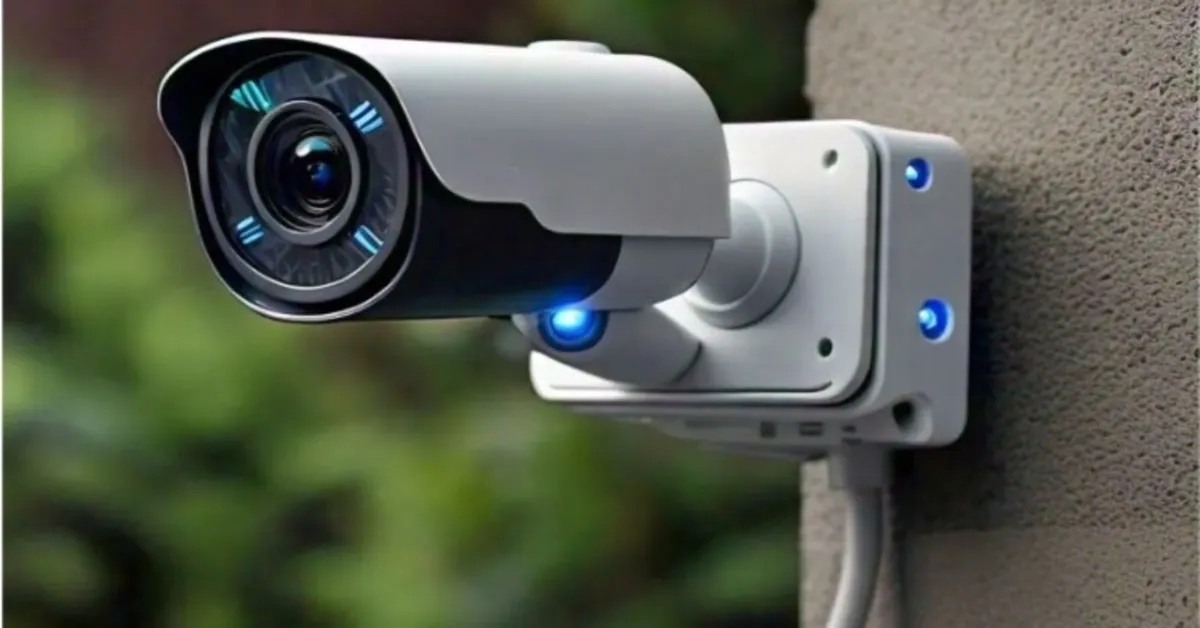In today’s world, security cameras are essential in keeping our homes, businesses, and loved ones safe. From deterring would-be intruders to documenting crucial events, cameras are the frontline protectors of our properties. However, like any technology, they require regular maintenance to stay in peak condition. Maintaining your security cameras year-round will ensure they work effectively when needed. This article will cover everything you need to know to keep your CCTV system running smoothly, from cleaning to software updates, troubleshooting, and preparing for seasonal challenges.
1. Start with the Basics: Clean Your Cameras Regularly
Dirt, dust, and other environmental elements can quickly build up on your cameras’ lenses, especially if they’re outdoors. Dirty lenses compromise image quality, making footage blurry or difficult to interpret. Follow these steps for cleaning:
- Use a microfiber cloth to wipe the lens gently. Avoid abrasive cloths that could scratch the surface.
- For tougher grime, apply a small amount of lens cleaner to the cloth, not directly onto the lens, and wipe gently.
- Don’t forget the camera’s housing, which can accumulate dirt, reducing visibility or potentially attracting pests.
- Inspect the lens for moisture inside the housing, especially during winter, as condensation can lead to internal fogging.
Regular cleaning every few months or as needed will help keep your images sharp and clear. Consider cleaning more frequently in a particularly dusty or humid environment.
2. Inspect Cables and Connections
A security camera is only as good as its connections. Damaged wires or loose connections can lead to power issues, connectivity problems, or gaps in footage. To keep your camera in good shape:
- Check all visible cables for signs of wear and tear, including fraying, termite, and other physical damage.
- Ensure connections are tight and secure, especially after storms or high winds.
- Use cable covers to protect wires from the elements and curious animals.
- Check the battery level regularly for wireless cameras, and replace or recharge batteries as necessary.
If you notice signs of wear, don’t wait until it’s a problem. Replacing or repairing worn cables and connections as soon as possible can prevent more significant issues.
3. Update Firmware and Software
Outdated firmware can result in performance issues, potential vulnerabilities, and compatibility problems with newer devices. Updating your cameras’ firmware and any associated software can improve performance and enhance security.
- Check for updates from the camera manufacturer or software provider every few months. Many companies release patches and improvements regularly.
- If possible, schedule automatic updates to ensure your cameras stay secure and functional without you needing to remember.
- Use compatible devices when accessing camera feeds, as new software may require updated operating systems or devices.
Regular updates will keep your system’s software current and improve your system’s ability to defend against cyber threats.
4. Inspect and Test the Cameras Regularly
To ensure cameras are working properly, perform regular tests to confirm they capture and store footage correctly. This proactive measure helps you catch problems early:
- Watch the live feed from each camera periodically, noting any unusual colors, flickering, or other irregularities.
- Check recorded footage to confirm that events are captured as expected and stored correctly.
- Test night vision functionality for infrared cameras to ensure clear footage in low-light conditions.
Regular inspections and tests will ensure your system’s reliability and allow you to catch and address any issues before they escalate.
5. Adjust Camera Positioning as Needed
Over time, the position of your cameras might shift due to weather, vibrations, or simple wear and tear. Regularly check that cameras are aimed precisely where they need to be:
- Verify angles and coverage areas every few months, especially after extreme weather or construction near the camera.
- Use a test monitor or mobile device to view the camera feed as you adjust.
- If necessary, adjust the area’s lighting to reduce glare or optimize visibility for day and night conditions.
Confirming your cameras are positioned correctly will ensure comprehensive coverage and reduce blind spots around your property.
6. Prepare for Seasonal Challenges
Different seasons bring unique challenges for security cameras, from snow and ice in the winter to rain and high heat in the summer. To keep your cameras protected:
- Check for snow or ice buildup on the cameras and housings in winter. Condensation can also be an issue, so ensure housings are sealed.
- During spring and summer, protect cameras from direct sunlight to avoid overheating. If direct exposure is unavoidable, consider using shading or repositioning.
- In fall, clear away leaves and debris that may accumulate on or around cameras, obstructing their view.
Proactively preparing for seasonal challenges will help your cameras function reliably, regardless of the weather.
7. Keep an Eye on Power Sources
For wired cameras, reliable power sources are crucial for uninterrupted surveillance. Here are some tips to avoid power-related issues:
- If using an uninterruptible power supply (UPS), test it regularly to ensure it will supply backup power during outages.
- For battery-powered cameras, inspect the batteries regularly and replace them as needed. Some high-quality batteries can last up to a year, but it’s best to check every few months.
- Solar-powered cameras also require maintenance, clean solar panels to optimize charging and check connections to avoid disruptions.
Reliable power is a fundamental requirement for security camera systems, so paying attention to power sources will keep your cameras active and recording.
8. Secure Against Cybersecurity Threats
In the digital age, cameras are as vulnerable to cyber threats as any connected device. Protecting your system against hacking and malware is essential:
- Change default passwords immediately after setup and use strong, unique passwords for each camera.
- Avoid public Wi-Fi when accessing your camera’s feed remotely.
- Enable two-factor authentication if the camera’s software or app supports it.
- Regularly update your network router’s firmware to close any security gaps that hackers might exploit.
Cybersecurity is a continuous process, following these practices will help secure your video feeds.
9. Monitor Storage Capacity
Storing security footage requires adequate storage space, and insufficient space can lead to important footage being overwritten or lost. To manage storage effectively:
- Check storage usage and back up important footage to an external drive if necessary.
- Adjust recording settings, such as resolution or frame rate, if you’re running low on space.
- Consider cloud storage options for important footage if local storage is limited.
Maintaining adequate storage capacity ensures you won’t miss any critical footage.
10. Schedule Professional Maintenance
While DIY maintenance goes a long way, scheduling professional inspections can identify any issues you may have missed. A technician can thoroughly check your entire system, from hardware to software, and recommend upgrades or replacements if necessary.
Professionals can also optimize your system, advise on upgrades, and identify any weak points in your current setup, making professional maintenance a worthwhile investment for system longevity.
11. Maintain and Repair Weatherproofing
Weatherproofing is a critical factor in the longevity of outdoor cameras, which are exposed to various elements year-round. Over time, weatherproofing seals can wear out, exposing the camera to moisture or dust. Here’s how to keep your cameras protected:
- Inspect rubber or silicone weatherproofing seals around the camera’s housing for cracks or deterioration.
- Reapply waterproof coatings or install additional enclosures if your area experiences extreme weather.
- Use a UV-resistant housing or cover for cameras in areas exposed to constant sunlight to prevent material degradation.
Maintaining weatherproofing not only improves camera durability but also ensures clear and uninterrupted footage throughout the seasons.
HD Cameras USA: A Reliable Partner for All Your CCTV Needs
For those looking to simplify maintenance and installation or upgrade to the latest in CCTV technology, HD Cameras USA is one of the best security camera companies in the US, known for top-notch service and quality products. Primarily operating in Florida, they offer expert services for everyone searching through the internet for CCTV supply and installation near me in the following locations:
- H.D. Cameras USA – West Palm Beach, FL
- H.D. Cameras USA – Fort Lauderdale, FL
- HD Cameras USA – Apopka, FL
- H.D. Cameras USA – Orlando, FL
- H.D. Cameras USA – Lakeland, FL
- H.D. Cameras USA – Miami, FL
- H.D. Cameras USA – Tampa, FL
- H.D. Cameras USA – Daytona, FL
- H.D. Cameras USA – Jacksonville, FL
Whether you need CCTV installation services or are looking for a trusted provider in CCTV installation Miami, HD Cameras USA delivers comprehensive solutions tailored to your needs. They ensure their clients receive the highest-quality surveillance and maintenance services from residential to commercial systems.
Conclusion
Maintaining your security cameras year-round is vital to ensure they function optimally. From regular cleaning to software updates, inspecting cables, adjusting positions, and preparing for seasonal weather, these simple yet effective steps will keep your CCTV system in shape. With the proper maintenance practices, your cameras can deliver reliable security footage, helping protect what matters most.
Investing time in regular maintenance will allow you to enjoy greater peace of mind, knowing your cameras are ready to perform at their best, no matter the season or circumstances.







